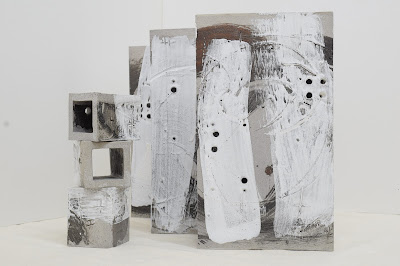Jane Rendell
Art and Architecture. 2006
If a site is a location that can be defined in physical and material terms, a situation can be both spatial and temporal, the location of something in space and a set of circumstances bounded in time – the conditions of a particular instant, a moment, an event. The associated verb to situate describes the action of positioning something in a particular place, while the adjective situated defines something’s site or situation. Situatedness, then, is a way of engaging with the qualities of these processes of situating or being situated.
‘Critical spatial practice’ came to my mind back in 2003 as a helpful way of describe projects located between art and architecture, that both critiqued the sites into which they intervened as well as the disciplinary procedures through which they operated. In Art and Architecture (2006), I argued that such projects operated at a triple crossroads: between theory and practice, between public and private, and between art and architecture, and I was keen to stress three particular qualities of those works: the critical, the spatial and the interdisciplinary.
Other practitioners and theorists have since worked with the term, evolving it in different directions. For example, there was the reading group and blogspot initiated by Nicholas Brown in the early 2000s, which came out of discussions around Brown’s own artistic walking practice. In 2011, Nikolaus Hirsch and Marcus Miessen started a book series with Sternberg Press called Critical Spatial Practice which focused on architectural discourse and practice, and in the first publication they asked the question: ‘What is Critical Spatial Practice?’.
But as this website shows a whole multitude of practitioners and theorists have been developing work in an ‘expanded field’ such as this, quite different perhaps from the one Rosalind Krauss identified in 1979. This is work that overlaps, diverges, converges, runs in parallel, and in circles, and in many cases came before and goes beyond; from transparadiso’s ‘direct urbanism’ to Steve Loo’s ‘sites of perdurance’, these practices incorporate ‘event scores’, ‘insertions’ even ‘banalities’ and pay close attention to relation, position, performance and situation, as well duration.
https://www.flickr.com/photos/russellmoreton/
Making/Matter/Material : Situated interactions between bodies and habitats.
Claywork/Correspondences : Situated interactions between bodies and habitats.
Drawing Participation : Situated interactions between bodies and habitats.
Indexical Awareness : Situated interactions between bodies and habitats.
Mechanisms of Mutuality : Situated interactions between bodies and habitats.
Viewing Assemblage : Situated interactions between bodies and habitats.
A Process of Consciousness : Situated interactions between bodies and habitats.
https://www.flickr.com/photos/russellmoreton/


.jpg)






No comments:
Post a Comment